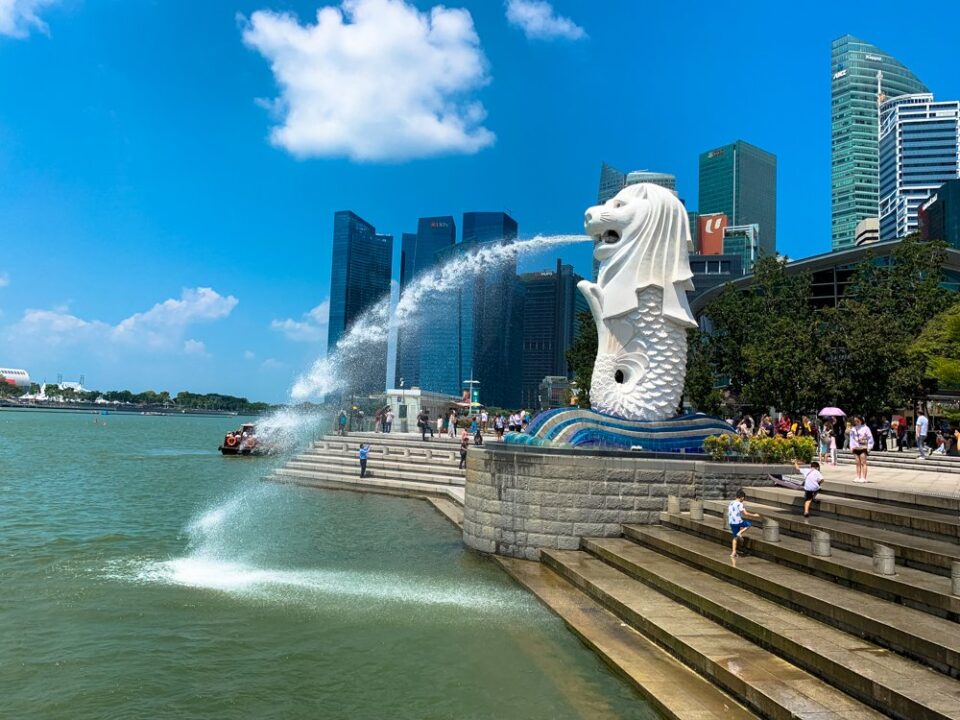Almost every capital has its symbol. Like the Eiffel Tower in Paris, Big Ben in London, or Saint George in Moscow. Singapore also has its symbol, called Merlion, which translates to “sea lion.” The fish represents the city’s connection to the sea, and the lion symbolizes fearlessness and strength.
Singapore is a city-state in Southeast Asia. It is one of the smallest countries in the world by area, with only 715 square kilometers. Singapore has a rich history; in the last one hundred and fifty years alone (since 1867), it was a British colony, during World War II it belonged to Japan (from 1942 to 1945). In 1963, as a result of a referendum, Singapore joined the Federation of Malaysia, and on August 9, 1965, it gained independence. Today, it is one of the most developed and richest countries in the world, with an international financial center, developed oil refining industry, and tourism, and it has the largest port in Asia.

Ancient Land Myths
In translation, Singapore means lion (singa) and city (pura). There are several legends about why the name of the city includes a lion, as this animal has never been native to the island. The city was named by the first prince of Malaysia, Sang Nila Utama. According to an ancient chronicle, after receiving the title “Lord of the Three Worlds,” he left his native city and traveled to other lands. Along the way, he was drawn to a picturesque island with shores covered in white sand.
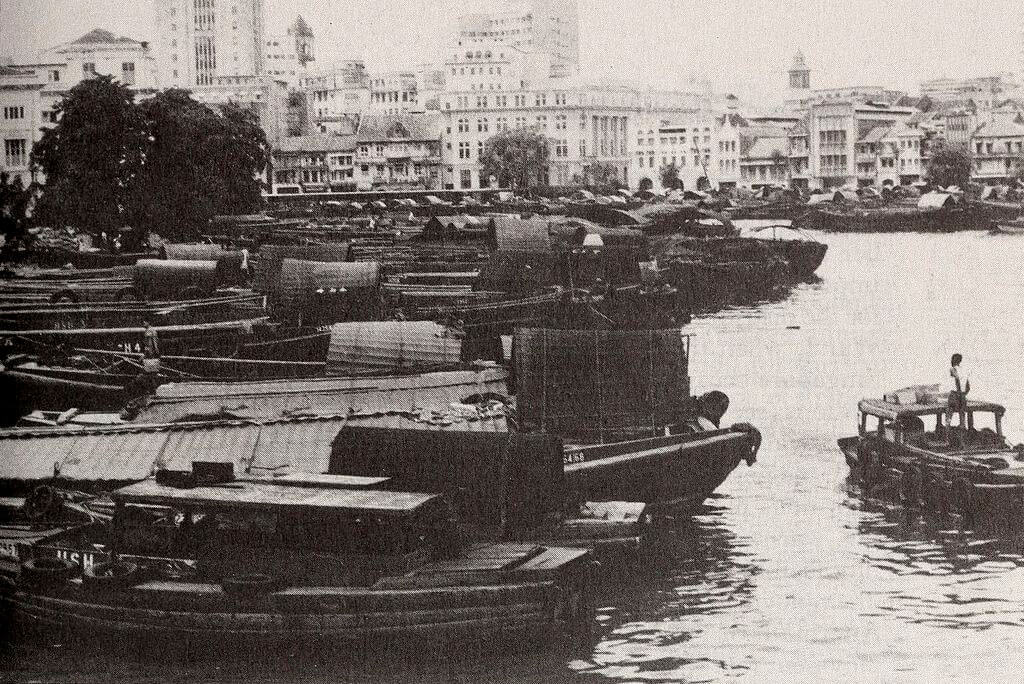
The locals said that this place (then a small fishing village) was called Temasek. According to the ancient chronicle, when the prince and his entourage landed on the island, they encountered an unseen creature with a brown body and a large head. Seeing people, it hid. None of the maharaja’s entourage knew what this strange beast was, only a very old man said it was a lion. The exotic animal, strong, graceful, and agile, impressed the prince. Therefore, having settled on this land, the prince renamed the island Temasek to Singapura, which means the city of the lion.
Creation Story
There is an ancient legend that says a giant creature with the body of a fish and the head of a lion lived in the sea near this place. It protected the island and all its inhabitants from severe storms or enemy attacks. At such times, the Merlion would rise to the surface, its eyes glowing red, incinerating anything that could threaten the people. The decision to make the Merlion the symbol of Singapore was made in 1964 at the initiative of the Tourism Board. It was created by designer Fraser Brunner. The symbolism is based on the origin of the city’s name.
The story of the monument began in the early 1970s. The Singapore government decided to make a statue in honor of the revered creature. Funds were allocated from the treasury in the amount of 165,000 Singapore dollars, a significant sum for that time. Talented local sculptor Lim Nang Seng took on the job and sculpted the figure of the Merlion as a fountain, based on the emblem from 1864. The statue is cast from white alumina concrete, stands 8.6 meters tall, weighs 70 tons, and was installed in 1972.
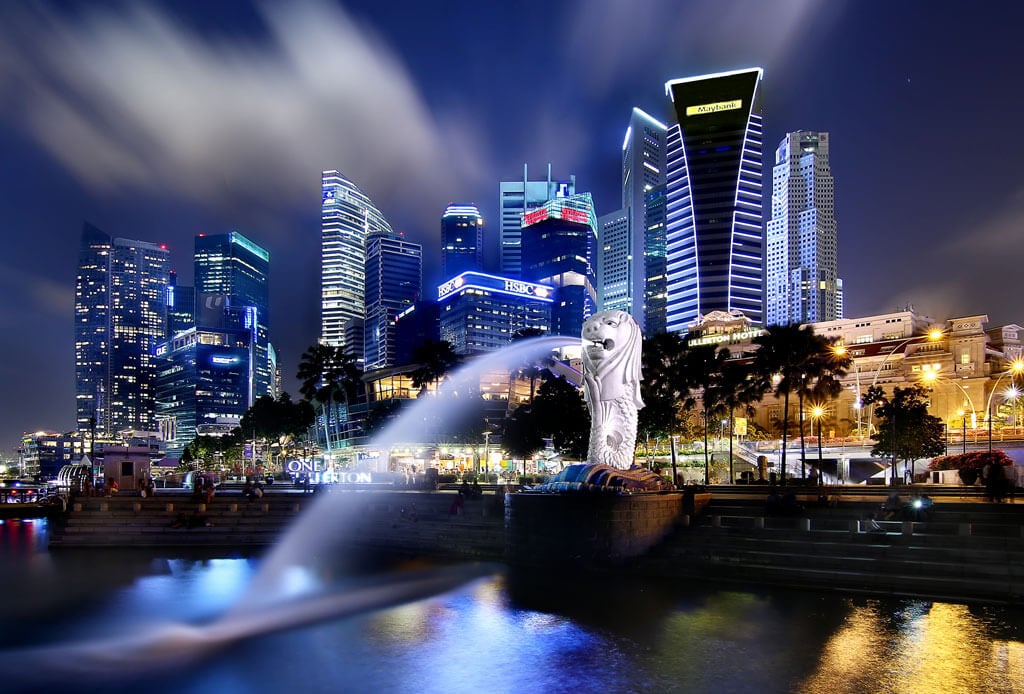
Initially, the sculpture was placed at the mouth of the Singapore River, near the Esplanade Bridge. A park was created around it, also named Merlion Park. But then the bridge was reconstructed, and the sculpture became invisible from the river. Therefore, in 2002, it was moved downstream more than 120 meters and set up opposite the Fullerton Hotel.
In 2009, a terrible thunderstorm swept over the city, and lightning struck the statue, causing severe damage — a large piece of concrete broke off from the lion’s head. Currently, everything has been carefully restored: the Merlion statue, the pool next to it, and the surrounding area — a place where numerous tourists and locals love to come. Here, one can admire the fountain and relax on the picturesque riverbank. The Merlion statue is oriented strictly to the east, as required by feng shui, so that the city prospers and becomes wealthy. A second small figurine of the half-fish, half-lion is nearby, in a glass cube. It weighs three tons and is no more than two meters tall.
Copies
Besides the original, there are four more copies of the Merlion in the capital. The largest 37-meter sculpture is located on Sentosa Island, across the strait from Singapore. The fountain was built as an entertainment center — there are souvenir shops, a cinema, and a history museum. The world-famous laser show is regularly held here. There are two observation decks on the 9th and 12th floors — at the level of the lion’s head and mouth. The Great Merlion is 60 meters above sea level, offering a stunning panoramic view of the island and the metropolis’s modern skyscrapers. The sight is unforgettable; if you have the opportunity, this place is definitely worth visiting.
On Mount Faber, high above the city, is one of the oldest parks in Singapore. There are many observation decks here because the mountain offers a wonderful panoramic view. One of the main attractions of Mount Faber is the Merlion statue, which greets tourists at the top of the hill. The three-meter sculpture is located near the office of the Singapore Tourism Board. This is a three-meter glazed fish-lion figure.
Locations
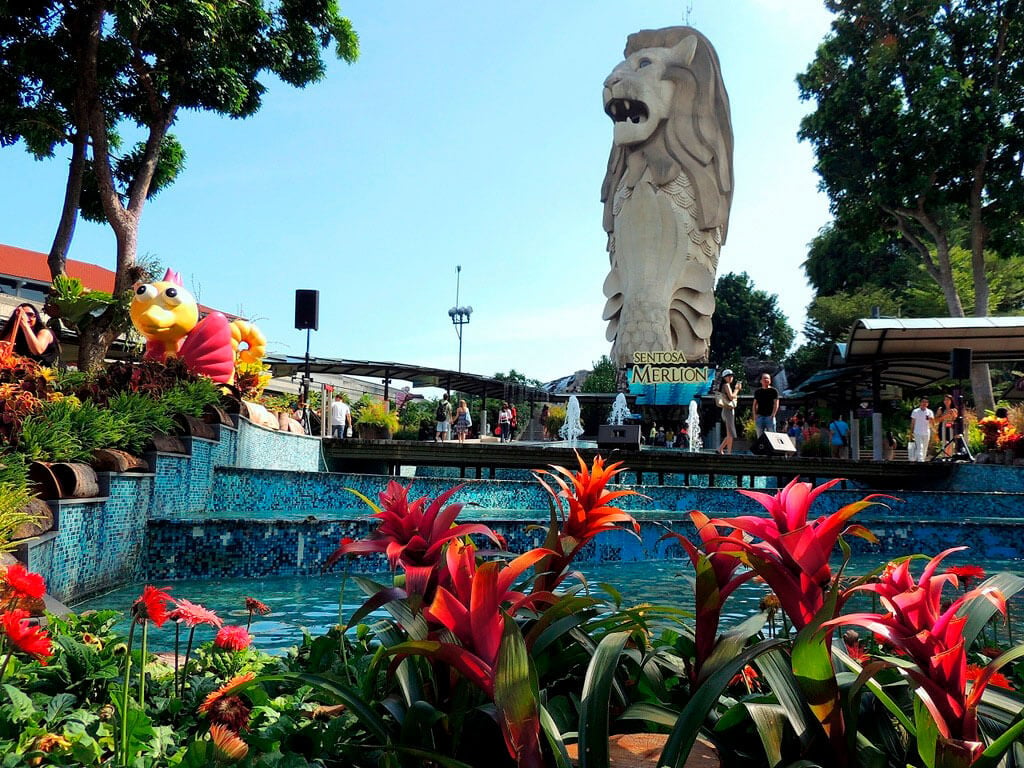
The original Merlion sculpture and its small copy are located in Merlion Park in Marina Bay, opposite the Fullerton Hotel. You can get here by taxi or bus. It is more convenient to use the metro, the Raffles Place station (blue line).
The largest 37-meter sculpture is located on Sentosa Island. You can get there by cable car, high-speed train, taxi, or walk over the bridge.
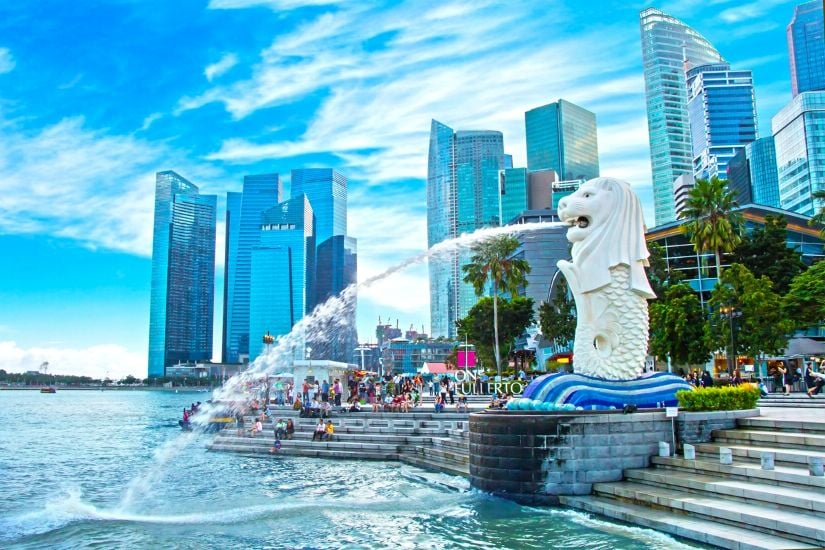
Mount Faber, where another Merlion sculpture is located, is connected to the city by cable car. This short trip will allow tourists to enjoy the scenic view of the Singapore harbor. The starting point is the Singapore World Trade Centre. Another Merlion copy is located in the city center on Grange Road. You can get there by bus or taxi. Today, the Merlion is a world-famous symbol of Singapore. But besides the statues of the mythical creature, there are many other attractions here that will impress the most discerning traveler. Some can only be seen in this exotic country. And the hospitable locals are always happy to welcome guests.

